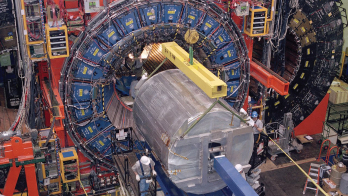Nine years ago the DAMA collaboration announced intriguing evidence for an annual modulation in the signals in its detectors, which could be evidence of dark-matter particles in the galactic halo. Now, with results presented first at a conference in Venice in April, the team claims the observation of a similar signal with a larger detector, measuring more flashes in June than in December.
Such a modulation would be the consequence of the Earth’s rotation around the Sun. There would be different detection rates for dark-matter particles when the Earth goes in the same direction as the flux from the galactic halo compared with when it goes against the flux, six months later.
The current experiment, DAMA/LIBRA, has been taking data at the Gran Sasso National Laboratory in Italy since March 2003. Located at almost 1 km deep, so as to be shielded against the cosmic-ray background, the experiment uses 25 crystals of sodium iodide, each with a mass of 9.7 kg and extremely high radiopurity. If a dark-matter particle collides in one of these, it should produce a faint flash of light, which is measured.
Taking the new data together with those from the previous results gives a total exposure of 0.82 tonne-years, and a result that suggests the presence of dark-matter particles in the galactic halo at a confidence level of 8.2 σ (Bernabei et al. 2008). The effect observed is independent of the various theoretical models of dark matter, such as weakly interacting massive particles or axions. Currently, it remains that no other dark-matter experiment has detected the modulation, and so the hunt continues.
Further reading
R Bernabei et al. 2008 http://arxiv.org/pdf/0804.2741v1.








